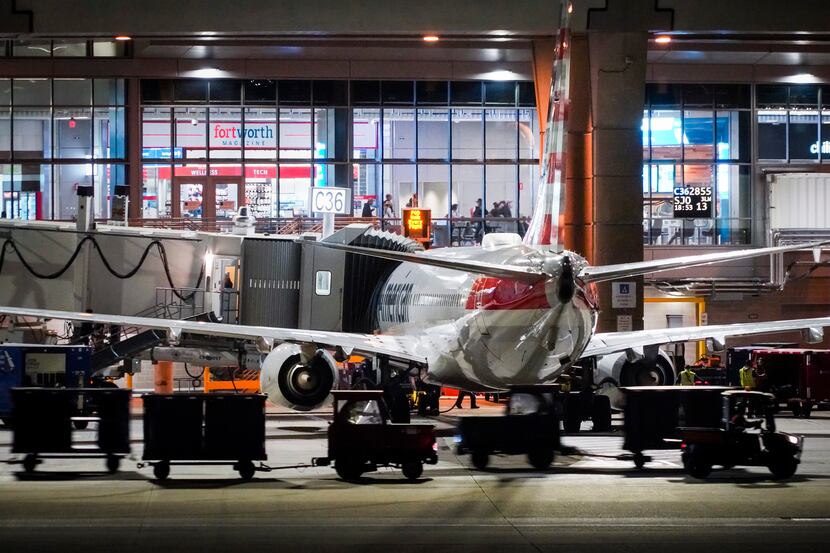DFW International Airport and Dallas Love Field recovered most of the passenger traffic they lost to the COVID-19 pandemic but are still behind 2019 as constraints slowed the airline industry last year.
DFW Airport finished 2022 with 73.4 million arriving and departing passengers, a 17% increase from 2021 but still more than 2.6 million passengers lower than the record set in 2019.
Although final numbers aren’t available across the country, DFW likely finished as the nation’s second-busiest airport for the third straight year, well behind Hartsfield-Jackson Atlanta International Airport’s 93.7 million passengers.
Dallas Love Field, home to Southwest Airlines, welcomed just shy of 16 million passengers, about 5% lower than in 2019.
“We’re really encouraged by what’s been going on, especially toward the end of last year,” Love Field interim aviation director Patrick Carreno said. “We had a single runway most of the year, so we’re expecting to be fully operational this year. And the flight schedules are showing that we will be on average over 200 daily departures. So we’re feeling good about the direction we’re heading for ‘23.”
Passenger traffic last year at both DFW and Love Field fared better than the nation’s airports as a whole. Passenger volumes were down 10.6% nationwide in 2022 compared with 2019, according to the Transportation Security Administration.
It appeared that DFW and Love Field were poised for record years early in the summer as consumer demand spiked with most COVID-19 restrictions gone. But a nationwide shortage of pilots and a training backlog for new ones forced airlines to reduce frequencies to many airports and to cut service entirely from others.
That shortage was caused by the thousands of pilots that took early retirement during the COVID-19 pandemic, combined with thousands more who were retiring due to the federal age limit of 65.
Love Field was limited to its backup runway for more than a year before it reopened in June, giving the airport lower capacity during peak periods and increasing delays.
“We expect the airlines to be able to operate fully,” Carreno said. “They were constrained last year, so that was an impact to their schedule and, with two runways, we have full capacity and we’re not expecting that to cause any disruption this year.”
Love Field also dipped in late December when an operational meltdown at Southwest Airlines forced the carrier to cancel 16,700 flights nationwide, including hundreds in Dallas.
Traffic also fell in August once the summer travel peak was over and leisure travelers, which have powered the travel recovery, returned to work and school.
DFW and Love Field are dominated by their hometown airlines and the success of those airports are largely dependent on their primary carriers.
Fort Worth-based American Airlines was responsible for about 83% of all passenger traffic at DFW, while Dallas-based Southwest carried 97% of passengers at Love Field.
And, of course, airports can’t host more passengers if airlines aren’t flying more passengers.
American carried 199.2 million passengers in 2022, 16 million less than in 2019, the company reported last month. Southwest carried 157 million passengers in 2022, about 5.7 million fewer than in 2019.
Several other airports that once ranked ahead of DFW in passenger counts have also recovered more slowly.
Chicago O’Hare had 62.7 million passengers through November, behind the 77.8 million it had at the same point in 2019, according to the Chicago Department of Aviation.
Los Angeles International finished the year with 65.9 million passengers after getting 88.1 million in 2019, Los Angeles World Airports data shows.
Fast-growing Denver International Airport, a hub for Southwest and United Airlines, had 63.6 million passengers through November, just slightly below passenger totals at the same point in 2019.
Both DFW and Love Field are projecting traffic to hit all-time records in 2023 and to surpass pre-COVID-19 numbers. After settling a lawsuit over gates in June, Delta also has started using larger aircraft to increase passenger loads out of Love Field, Carreno said.

